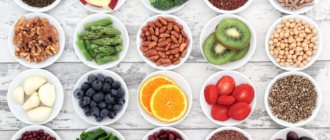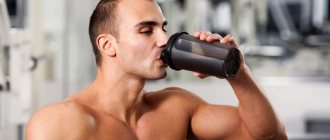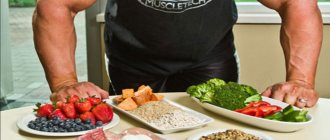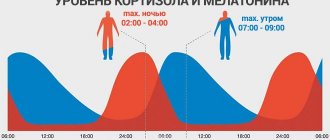The human body consists of many muscles. The main muscle groups are the back, arms, abs, chest, legs and shoulders. During classes, various auxiliary muscles are activated.
Exercises for the body muscles are divided into basic and isolated, high-intensity and strength.
This division helps to achieve your goals - lose weight, build muscle mass, increase muscle strength and achieve body definition.
Why are loads needed for the muscles of the body?
Physical activity increases muscle power and mass. You need to pay attention to each muscle group. And that's why:
- A pumped shoulder girdle is beauty and strength. These muscles can only be pumped up through strength exercises. With systematic training with dumbbells or a barbell, not only muscles will grow, but also their strength. Trained deltoids allow you to lift and hold significant weight.
- Strong back muscles provide a proportional torso. Long muscles along the spine help the torso rotate laterally and extend. The latissimus muscle forms the tapered torso, which makes the male figure so attractive.
- Pumped up arm muscles - biceps and triceps - make your arms strong. These muscles are easy to train, so you can make them sculpted in a short time. The biceps allow the arm to bend, the triceps allow the arm to extend and move the arm back. Strong arms make it possible to lift heavy objects and do pull-ups on the horizontal bar.
- Strong legs provide confidence in lifting weights, running distances, and squats. These are the largest muscles of the body - quadriceps, hamstrings, biceps, gluteus, and gastrocnemius. For an athlete, legs are very important.
- The chest muscles protect the chest, collarbones, are involved in arm movements, and even help with breathing. Well-trained chest muscles allow you to do push-ups from the floor.
- The abdominal muscle – the rectus abdominis – is the strongest. If you train her, she takes on a “cube” head start. This muscle is involved in bending, and the external oblique muscle is responsible for turning the body to the sides. The abs also protect the internal organs. So, a flat stomach is not only for beauty, but also for health.
Well-trained muscles mean physical and emotional well-being, health and beauty.
Interesting! The human body consists of more than 640 muscles. The more muscles involved in an activity at the same time, the more energy the body expends.
Be sure to watch: Learning to restore breathing after physical activity: useful exercises Basic exercises for all muscle groups: a strong and strong body at home Jumping on a trampoline: effective for losing weight How to maintain excellent physical shape after 40 years: choosing exercises
Basic and insulating: what is the difference
Basic and isolation exercises have significant differences. Which exercises for the body muscles to prefer depends on the goals of the exercise:
- Basic ones involve several muscle groups in the process at once, allowing you to reduce training time and burn a lot of calories.
- Isolating exercises are aimed at working a specific muscle group. They promote the growth of muscle tissue.
Examples of basic exercises that are often used by people leading a healthy lifestyle:
- deadlift;
- lunges (with a barbell or dumbbells);
- pull-ups;
- push ups;
- Bent-over barbell row;
- bench press;
- dumbbell press.
Basic classes are recommended for those who want to tighten their figure and become slimmer. More often they are performed using natural weight. Isolating exercises require weights in the form of dumbbells, barbells, weights, as well as the use of exercise equipment.
A competent combination of basic and isolating exercises in a single complex gives excellent results. They complement each other.
How to build muscle in a short time
Frequent and high-calorie meals
To increase muscle mass, you should not allow yourself to starve. Meals should be regular and frequent, maximum interval is 3 hours. Breakfast is required, but it can be liquid, for example, in the form of a cocktail.
When you skip a meal, your body releases cortisol, which breaks down muscle tissue and ruins your efforts in the gym. At the same time, it is necessary to increase the total daily calorie intake. To gain muscle mass, most bodybuilders recommend getting at least 40 kilocalories per kilogram of weight.
The main principle is to consume more calories than you expend. If until now you received 25 kilocalories per 1 kilogram, begin to gradually increase this level. For example, if you weigh 80 kilograms and get 2,000 kilocalories per day, you need to systematically increase your caloric intake every week by 200-400 kilocalories until it reaches 3,200.
Gradual changes
Slow movement towards a goal is better than fast movement. The body responds to any stress or sudden change with compensatory reactions that can negate all efforts. It takes time to switch to a new eating style, increase calories, or change your workout routine. To achieve success, take things gradually. Continuous progress, even slow progress, will sooner or later lead to the goal.
Whether you are gaining or losing weight, avoid “shock therapy.” Take advantage of special programs for beginners - they outline the diet, optimal loads and recommendations for recovery. Avoid sudden changes in diet. If you feel that fat is growing instead of muscles, change the quality, not the quantity, of food.
Food diary
This condition is one of the main ones to gain weight through muscle mass. With a food diary you get a powerful tool for motivation and self-control. You need to write down everything without exception. By comparing the dynamics of mass, assessing its quality, the thickness of the fat layer, you can immediately adjust your diet. When a fat layer appears, daily caloric intake should be reduced by 100-200 kcal.
Don't exercise while hungry
Training while hungry is ineffective. The best option is slow carbohydrates two hours before training. If you don’t have time, they can be replaced with gainer and protein. When the body lacks energy, in a state of stress it takes it from the muscles. As a result, the volume of muscle tissue after exhausting work only decreases, and this is not our goal.
Dose your cardio load
Too much cardio burns fat, but at the same time inhibits muscle growth. Since it is impossible to quickly gain weight without increasing caloric intake, it is necessary to monitor the balance of cardio load and incoming calories. The optimal load is 15-20 minutes of running, jumping rope or aerobics.
You shouldn’t give up cardio training completely - in moderation, it prevents obesity, speeds up metabolic processes and stimulates appetite. Three moderate cardio workouts per week will strengthen the heart muscle, improve the supply of oxygen and nutrients, and increase overall tone and speed of recovery.
Quality of calories
Choose foods that are rich in protein and slow carbohydrates, with minimal amounts of fat and sugar. Buckwheat porridge with chicken or fish is preferable to huge amounts of calories from sweet, fatty foods.
The list of healthy foods includes: vegetables, eggs, turkey, chicken, beef, fish, cottage cheese, buckwheat and oatmeal, nuts. Mashed potatoes, rice, dried fruits, and steaks are definitely better in terms of calories than white bread or carrot salad. It is worth giving up foods that create the effect of false satiety: popcorn, bran, low-calorie soups, bread.
Serving Size and Liquid Calories
If at the current stage your goal is pumping, double the usual volume of servings. This rule also applies to the protein shakes you consume if you prefer them to “solid” foods. These cocktails are prepared with milk, cottage cheese, banana, oatmeal and honey. Add high-calorie ingredients that can be consumed in liquid form to the shake: for example, edible coconut or nut butters, milk powder, fruit, yogurt.
Adjust the portion size depending on the results - normal muscle growth should be 3 kg per month. Faster growth indicates that the fat layer is also increasing at the same time.
Dishes capacity
A psychological technique well known to nutritionists. Only in our case, home dishes should be larger. Try to feel your body, its ability to currently digest a large volume. You can split the food, for example, after some time, eat the second part of the portion.
Gainers after workout
Without exception, all programs with recommendations for gaining muscle mass mention complexes of proteins and amino acids. It is correct to drink a cocktail of gainers after each workout - within 30 minutes after exercising in the gym. In addition to proteins, they contain carbohydrates, speed up recovery and prevent the body from compensating for energy costs using its own muscles.
Sleep and rest
The body needs to be given the opportunity to recover. If you are an ectomorph by nature, then your body needs more rest - sleep, auto-training, if anxiety increases, a short daytime rest lasting 20-30 minutes. During active training, sleep at least 8-9 hours. During sleep, 80% of the daily amount of growth hormone is produced.
Choose basic exercises
Strive for big goals, your task is to work your whole body, build muscle, so that you can then work with it and improve it locally. Therefore, basic exercises are in the foreground. Gaining muscle mass occurs faster, and the results are more sustainable than when performing local exercises for the abs or back.
Complexes in which different groups work
Let's look at exercises that are aimed at pumping certain muscles.
| Impact | Classes | Technique | Quantity |
| For trapezoid | One-arm dumbbell row Shrugs with dumbbells | Stand on the bench with one knee. Lean with your hand. With your other hand, grab a dumbbell with your palm facing your body. Slowly lift the dumbbell until your fingers rest on your side. Take dumbbells in your hands, stand straight, arms hanging freely. Raise your shoulders up, then slowly lower them. Lower slowly. This exercise targets the upper trapezius. | 10 times from each hand. 8-10 times. |
| For triceps | Curling your arms behind your head French bench press | Sit on a chair, put one hand on your knee, and with the other take a dumbbell and place it behind your head. Push up behind your head and straighten. Lie down on the bench. Press your feet to the floor, buttocks and back to the bench. Hold the barbell so that your palms face up. Stretch your arms up and down with the barbell. | 10-12 times with each hand. 8-10 times. |
| For the back | Raising your leg Stretching near the wall | Lie on your back, place a soft cushion under your lower back, lift your leg and hold your thigh with your hands. Hold for 30 minutes and repeat with the other leg. Stand near the wall on your heels, rest your palms on the wall, arms outstretched. The body is bent, stretch back. | 10-12 times on each leg. 8-10 times. |
| For the press | Folding Reverse plank | Lie on your back, stretch your arms behind your head. Raise your torso and legs at the same time. Outstretched arms tend to the legs. Lie on the floor, rest your elbows on the floor, cross your legs and raise them at an angle of 30 degrees. Hold in this position and then slowly lower. | Repeat 8-10 times. 45 seconds. |
| For forearm | Hanging on the horizontal bar Rotation of the load | Hang on the bar, arms extended. Take a handle with a load of 10 kg or more with an overhand grip. Rotate until the load rises upward. Also rotate in the other direction. | 45 seconds. 45 seconds. |
| For legs | Egyptian pose Squats | Stand with one foot in front of the other. Fold your hands like you would at school at your desk. Bend the leg in front at the knee. Squat in this position, keeping your back straight and your knee almost touching the floor. Change the position of your legs and do the same. Stand up straight, connect your fingers, spread your elbows. Squat so that your thighs are parallel to the floor. | 8-10 times on each leg. 8-10 times. |
| For the chest | Knee push-ups Palm clenching | Take a pose on the floor, arms extended, legs bent at the knees, shins together and lifted off the floor. Bend your elbows and do push-ups without lowering your feet. Stand up straight, clasp your hands at chest level with your palms in a prayer position. As you inhale, make several rhythmic contractions of the pectoral muscles by pressing your palms against each other. | 10-12 times. 10-15 times. |
| For deltas | Swing dumbbells to the sides Vertical dumbbell presses | Stand with your feet shoulder-width apart and hold dumbbells with an overhand grip. Raise your arms to shoulder level and lower them. Do not make hasty movements. Can be performed standing or sitting. You need to hold the dumbbells so that your fingers point forward. Push up all the way and lower to your shoulders. | 10-12 times. 8-10 times. |
| For biceps | Dumbbell Curl Pull-ups on the horizontal bar | Place your feet shoulder-width apart. Hold the dumbbells with your fingers towards you. Bend and straighten your arms at the elbows. Grab the bar wider than shoulder-width apart with a regular grip. In the lower position, try to fully straighten your arms; in the upper position, try to reach the bar with your chin. | 10-12 times. Start with 5. Increase to 10-15 times with each new approach. |
| For the buttocks | Bridge Crossing legs | Lie on your back, bend your knees. Raise your pelvis from the floor so that you get a straight line from your chest to your knees. Lower and raise again. Lie on your stomach, bend your legs at the knees and cross them alternately. | 10-12 times. 20-25 times. |
There are many different exercises that can add variety to your workout routine. The exercises must be performed smoothly.
Attention! To build muscle mass, you need to have enough protein in your diet.
Morning exercises
To improve health for men, experts recommend dividing all exercises that help increase potency into 2 groups: the first consists of warming up elements that are performed in the morning. The other consists of more complex exercises aimed at restoring sexual function. In the morning, you need to do the following every day:
- Lying on your back, raise your right leg so that the stretched toe points to the ceiling. Make circles with your feet clockwise for 15 seconds and back for the same amount. Repeat 5 times for each leg.
- Tighten your stomach and perineal muscles in an upright position. Maintaining this feeling, march for a minute, raising your knees to the level of your hips.
- Lying on your back, stand on the bridge. Lift your legs off the floor one at a time for exactly one minute, without losing your balance.
- How to spray tomatoes after rain
- Nizoral tablets - instructions for use, composition, indications, side effects, analogues and price
- 6 Signs You Suffer from a Mold Allergy
How to select optimal loads that involve the right muscles
The load must be selected taking into account weight, age, physical fitness, that is, individually. The average indicators are:
- Barbell squats for leg development – 3 sets of 10 reps.
- Shrugs with dumbbells – for trapezius muscles – 3 sets of 12 reps.
- Pull-ups for back muscles – 4 sets of 8 times.
- Dips for arm development – 3 sets of 15 reps.
- Horizontal barbell press – for chest – 3 sets of 12 reps.
Beginners are recommended to do 1-2 sets with light weight. A set is a repetition of the same exercise.
Attention! The heart rate during exercise should not exceed the maximum threshold. It is equal to the number obtained as the difference between 220 and age.










